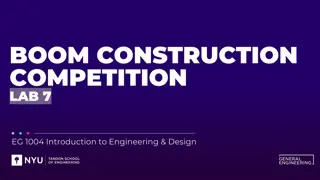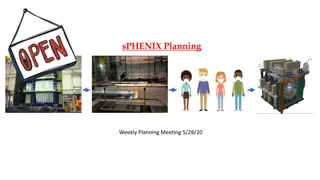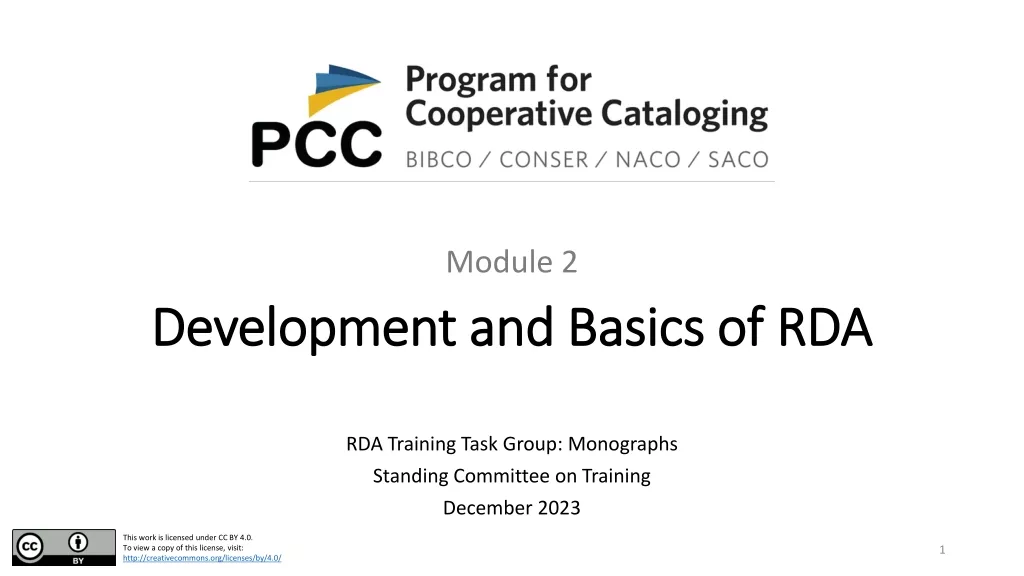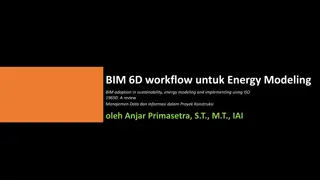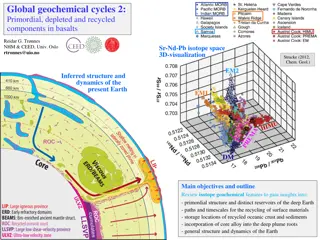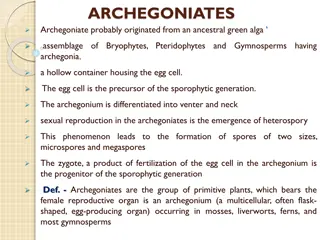Evolution of Elevators: From Hoists to Modern MRL Lifts
Elevators, initially known as hoists, have a rich history dating back to hundreds of years BC. The development of modern elevators from hydraulic to electric power revolutionized the industry, enhancing safety and speed. General terms related to lifts such as Lift Pit, Rated Load, and MRL Lift are crucial in understanding elevator functionality and design considerations. Factors like intended use, system performance, and accessibility requirements play a key role in determining the type and capacity of lifts needed for different building types.
Download Presentation
Please find below an Image/Link to download the presentation.
The content on the website is provided AS IS for your information and personal use only. It may not be sold, licensed, or shared on other websites without obtaining consent from the author. Download presentation by click this link. If you encounter any issues during the download, it is possible that the publisher has removed the file from their server.
Presentation Transcript
Subject: Building Services - III Topic: Lifts Presented by: Atul Setya
Elevatorhistorybegins several hundred years before Christ. The earliest elevators were called hoists. They were powered by human and animal power, or sometimes water-driven mechanisms.They were in use as early as the 3rd century BC. Modern elevators were developed during the 1800s. These crude elevators slowly evolved from steam driven to hydraulic power. The first hydraulic elevators were designed using water pressure as the source of power. They were used for conveying materials in factories, warehouses and mines. Hydraulic elevators were often used in European factories.
Revolution in elevator technology began with the invention of hydraulic and electricity. Motor technology and control methods evolved rapidly and electricity quickly became the accepted source of power. The safety and speed of these elevatorswere significantly enhanced. The first electric elevatorwas built by the German inventor Wener Von Siemens in 1880. In 1889, the first commercially successful electric elevator was installed. In 1887, an electric elevator with automatic doors that would close off the elevator shaft was patented. This invention made elevators safer.
General TermsRelating to Lifts LIFT(elevator) :Lift An appliance designed to transport persons or materials between two or more levels in a vertical or substantially vertical direction by means of a guided car. The word elevator is synonymously used for lift Dumb Waiter : A lift with a car which moves in guides in a vertical direction; has a net floor area not exceeding 1 m2. dumb waiter total inside height of 1.2 m, whether or not provided with fixed or removable shelves; has a capacity not exceeding 250 kg and isexclusively used for carrying materials and shall not carry any person. LiftPit:The space in the lift well below the level of the lowest lift landing served LiftLanding :That portion of a building or structure used for discharge of passengers or goods or both into or from a lift car . Rated Load (Lift):The maximum load for which the lift car isdesigned and installed to carry safely at its rated speed. Rated Speed (Lift):The mean of the maximum speed attained by the lift car in the upward and downward direction with rated load in the lift car MRLLift:MRL Lift Itdo not have a fixed machine room on the top of the hoistway, instead the traction hoisting machine is installed either on the top side wall of the hoistway or on the bottom of the hoistway.
Intended use of lift:The number of liftsand their capacities (that is,load and speed) required for a given building shall be suitably decided to meet the intended requirement. System performance :System performance criteria shall be based on building type (residential, commercial, hotel, hospital, etc) Accessibility requirements :All lifts installed for public use shall meet the accessibility requirements in accordance with 13 of Part 3 Development Control Rules and General Building Requirements of the NBC-2016 Environmental conditions :Liftsdirectly exposed to atmospheric conditions, that is,weather (for example, those meant for external applications), or any other adverse condition shall be appropriately designed and protected for that particular condition.
Considerations for Selection of Lifts Type of main drive for lift : Whether electric traction, geared or gearless or hydraulic depending on speed, stops/travel height and capacity requirement. Civil engineering requirements :Machinery location that is,machinery to be located in machine room or machinery to be kept inside lift well thereby eliminating conventional machine room. Seismic considerations :Whether the lift isto be protected against seismic forces or whether the lift isto be rescued to a landing on detection of earthquake or both.
Types of Lift Twotypes of lift Traction (Electric) lift Virtually limitless rise (high &mid rise) High speeds, but high installation cost T ype of T raction lift 1.Geared Traction 2.Gearless Traction Hydraulic lift Limited to heightsof about 60 ft.(6 stories) Lowerspeeds Lower initial cost higher power consumption T ype of Hydraulic Lift 1.Holed Hydraulic 2.Holeless Hydraulic 3.Roped Hydraulic
Lift have a gearbox that is attached to the motor, which drives the wheel that moves the ropes. Geared traction lift are capable of travel speeds up to 500 feet per minute. The maximumtravel distance for a geared traction elevator is around 250 feet.
GearlessTraction lift Gear-less Traction Elevators have the wheel attached directly to the motor. Gear-less traction elevatorsare capable of speeds up to 2,000 feet per minute and they have a maximum travel distance of around 2,000 feet so they are the only choice for high-rise applications. Geared traction elevators are middle of the road in terms of initial cost, ongoing maintenance costs, and energy consumption. Gear-less traction elevatorshave a high initial cost, medium ongoing maintenance costs, and use energy a bit more efficiently than geared traction elevators.
Elevatorare supported by a piston at the bottom of the elevator that pushes the elevator up as an electric motor forces oil or another hydraulic fluid into the piston. The elevator descends as a valve releases the fluid from the piston. They are used for low-rise applications of 2-8 stories and travel at a maximum speed of 200 feet per minute. The machine room for hydraulic elevators is located at the lowest level adjacent to the elevator shaft.
Bottom DriveLift For building up to about 8 floors the lift machine room may located at / below the lowest floor The system is for less then 8 floors The car speed is limited to 1m/s The lift machine create more noise in lift shaft More maintenance cost Vibration is more difficult to isolate from structure Impose greater load on structure The system cost is more
Recommended Dimensions of Passenger Lifts and ServiceLifts As per Clause 5.10.3.1 of section5A of Part-8 of NBC 2016 The outline dimensions of lift shaft, machine room, pit depth, overhead and raw door openingsize for lifts
Groupingof lifts in high rise building The lifts should be easily accessible from all entrances to the building. For maximum efficiency, they should be grouped near the centre of the building. It is preferable not to have all the lifts out in straight line and, if possible,not more than four lifts should be arranged in this manner. If more than 4 lifts have to be grouped together in a straight line, then destination control systemswould require to adopted. Further, the corridor should be wide enough to allow sufficient space for waiting passengers as well as for through passengers
Lift lobbies All obstruction to traffic flow , particularly from passers-by, should be eliminated Cleary visible Ground floor lift lobby from main entrance of the building Main entrance should not visible for passengerwithin the lift car. To ensure that car are not kept waiting Noise generated by lift machinery and cars should be considered in relation to sensitive areas Plan for service core and there is buffer zone between lift lobby and the occupied space Preferred and acceptable arrangementsof lift Not recommended
TermsRelatingto Planningand Design of Lifts Door ClosingTime(tc) Time period measured from the instant that car doors start to close until the doors are locked. Nominal TravelTime(NTT) The nominal traveltime is defined as the time it would take to run a distance of the total travel at the rated speed of the lift without taking into account the acceleration and deceleration of the car or the intermediate stops of real runs. PassengerAverage Waiting Time (AWT) Averageperiod of time from the instant a passenger registers a landing call or joins a queue, until the responding lift begins to open its doors at the boarding floor. Round Trip Time (RTT) The average time taken by a single lift to make a trip from the main terminal back to the main terminal, starting from the time the car doors open at the main terminal until the car doors re-open at the main terminal after serving all demand along the way. HandlingCapacity (HC) The number of passengers that a lift system can theoretically transport during the up-peak traffic condition with car occupancy of 80 percent of the actual capacity expressed as a percent of the total building population.
The handling capacity is calculated by the formula: HC = (300 x Q x 100)/T x P Where HC = Handling capacity as the percentage of the peak population handled during 5 min. Q = Average number of passengers carried in a car T = waiting interval, and P = Totalpopulation to be handled during peak morning period. (It is related to the area by a particular bank of lifts) The value of Q depends on the dimensions of the car. It may be noted that the capacity loaded always to its maximum capacity during each trip and, therefore, for calculate the value of Q is taken as 80% of the maximumcarry capacity of the car.
Waitinginterval The waiting interval is calculated by the formula : T = RTT/N Where, T = waiting interval N = number of lifts, and RTT= round trip time RTT is the sum of the time required in the following process : a)Entry of the passengers on the ground floor, b)Exit of the passengers on each floor of discharge, c)Door closing time before each floor of discharge, TC d)Door opening time on each discharging operation, TO e)Acceleration periods, f)Stopping and leveling periods, g)Period of full rated speeds between stops going up, and h)Period of full rated speeds between stops going down. It is observed that the handling capacity is inversely proportional to the waiting time which in turn is proportional to RTT.
Installationrequirements Conformitywith Lifts Act and Rules The installation shall be carried out in conformity with Lift Acts and Rules, wherever they are in force. Like THE BOMBAYLIFT ACT,1939, THE DELHI LIFT RULES, 1942 etc. Conformitywith The Electricity Act, 2003 and Rules/RegulationsThereunder All electrical work in connection with installation of lifts shall be carried out in accordance with the provisions of The Indian Electricity Act, 2003 ConformitywithIndianStandards All materials, fittings, appliances, etc, used in electrical installation shall conform to Indian Standard specifications wherever these exist. Conformityto AccessibilityRequirements All lifts installed for public use shall meet the accessibility requirements in accordance with 13 of Part 3 Development Control Rules and General Building Requirements of the NBC 2016 Conformitywith Fire Regulations The installation shall be carried out in conformity with Part 4 Fireand Life Safety of the NBC 2016 and the state fire acts/local fire regulations, wherever they are in force.
Control Systems The control systems include governing starting, stopping and direction of motion, acceleration speed and retardation of moving members. The various control systems are mentioned below Automatic Control Automatic Control is a method of operating by which a momentary pressure on a push button sets the car in motion and causes it to stop automatically at any required lift landing. Once the passenger has boarded and indicated the destination the car is exclusive to that passenger, and will ignore all other landing calls. Until the destination floor is reached. The system is recommended only for light traffic and with manual entrances to a maximum eight floor.
Collective Control Collective Control is a generic term for those methods of automatic operation by which calls made by pressing push buttons in the car and at lift landings are registered. The calls are answered by the car stopping in the floor sequence at each lift landing for which calls have been registered, irrespective of the order in which the calls have been made, and until all calls have had attended. Collective control of any form is usually not suitable for good lifts, except where loading is not expected to fill the car and additional loads can be taken at other stops
Directional Collective Control For two or three cars is a system covering a control in which the two or three cars in a bank are interconnected. One push with up and down is required at each landing and the call system is common to all lifts. Down Collective Control In this system landing calls are registered from a single push button, irrespective of the car being in motion or the landing door being opened and calls are stored until answered. Any number of calls can be registered and the car will stop in sequence in the down direction at each of the designated floors. This system is suitable to serve for traffic between the ground and upper floors only, and no inter-floor traffic. Attendant and dual Control In this system there is provisions for both automatic control and attendant operation, the transfer of operation being achieved by a key operated switch in the car. The attendant directly controls the movement of car by means of a handle operated switches or push button. Due to improvement in automatic Operation, these types are sparingly used with exception of an automatic attendant operation.












